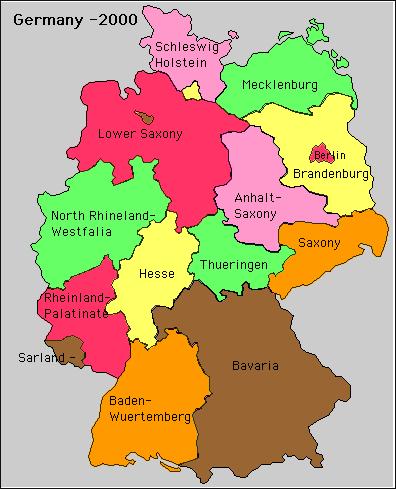Lower Saxony/ Niedersachsen
Lower SaxonyLocated in the northwestern part of Germany
Lower Saxony borders many other German states:
- Southeast: Thuringia
- East: Brandenburg and Saxony-Anhalt
- North: Hamburg and Schleswig-Holstein
- South: Hesse
- Southwest: North Rhine- Westphalia
- Northeast: Mecklenburg-Vorpommern
Also bordered by the Netherlands and the North Sea
How many live here?
- 7,977,000 people
- 4th largest state in population
How does its size relate to Minnesota, or any other US state?
- In population:
- Lower Saxony is equivalent to the population of Minnesota and Iowa together
- It is about half the size of Indiana
What is special about Lower Saxony?
- Second largest state in size
- 20% of the state is designated to nature conservation
- Agriculture and farming make up a big part of the economy
- Automobile manufacturing and automobile parts manufacturing are also important economic part of Lower Saxony
- Volkwagon has 5 production plants here along with its headquarters, which is located in Wolfsburg
- The capital of Lower Saxony is Hannover.
- Hannover is also the largest city in Lower Saxony
- Mining has been an important source of income in Lower Saxony for centuries. Lower Saxony is also an important supplier of crude oil in the European Union. Mineral products still mined today include iron and lignite.
- The coat of arms shows a white horse (Niedersachsenross) on red ground, which is an old symbol of the Saxon people
What was the Lower Saxony historically? A kingdom, a duchy, a free city?
- Was originally a duchy
- It is named after the Saxons
- Originally the region was simply called "Saxony", but as the center of gravity of the Duchy of Saxony gradually moved up the Elbe, towards the present-day states of Saxony-Anhalt and Saxony, the region was given the name of Lower Saxony
- The state was founded in 1946 by the British military administration, who merged the former states of Brunswick, Oldenburg, and Schaumburg-Lippe with the former Prussian province of Hanover







